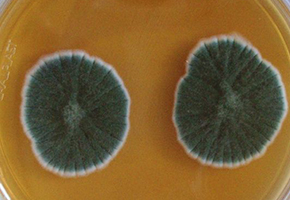

With participation from Roberto Berlinck of the University of São Paulo, the study has been published in the journal Nature (photo: R. Berlinck)
With participation from Roberto Berlinck of the University of São Paulo, the study has been published in the journal Nature.
With participation from Roberto Berlinck of the University of São Paulo, the study has been published in the journal Nature.

With participation from Roberto Berlinck of the University of São Paulo, the study has been published in the journal Nature (photo: R. Berlinck)
By José Tadeu Arantes
Agência FAPESP – Fungal metabolism has been used by humans since pre-historic times in the making of such foods as bread, cheese, beer, and wine. However, details about the mechanisms involved in these processes have not yet been adequately studied.
This is precisely why studies about metabolism in fungi are so important; more so because among the products of this metabolism are nitrogenated substances that compose alkaloids. Alkaloids present various biological effects, some involving intoxication (as with the derivatives of diethylamide lysergic acid, LSD), with others being medicinally useful (in the case of penicillin).
Chemist Roberto Gomes de Souza Berlinck, a full professor at the Institute of Chemistry of the University of São Paulo, São Carlos campus (IQSC-USP) and member of the Biota-FAPESP program coordinating team, investigated the metabolism of Penicillium citrinum, a marine fungus.
The study revealed a previously unsuspected metabolic pathway used by this organism. It was recently described in the article “Total synthesis and isolation of citrinalin and cyclopiamine congeners,” published in the journal Nature.
“We discovered how this fungus biosynthesizes two alkaloid substances, citrinalins A and B, in a manner that was relatively different and had never been described before for related fungi. This allowed us to formulate a new understanding of the process,” Berlinck told Agência FAPESP.
According to the researcher, the unusual metabolism is due to the fact that the fungus makes much more efficient use of the amino acid ornithine, which does not play a role in the formation of proteins, than it does of the amino acid proline, which does play a role in protein biosynthesis.
“Until our study, researchers had thought that proline was the amino acid needed for similar fungi to biosynthesize corresponding substances,” Berlinck said.
The study was carried out within the scope of the research project “International collaboration in the chemistry of alkaloid natural product biosynthesis,” conducted by Berlinck in collaboration with David Sherman of the Life Sciences Institute at the University of Michigan and funded by FAPESP.
“Because it is a relatively new field for us, we ended up conducting the study a bit ‘naively,’ with no preconceived notions,” Berlinck said. “Thus, our apparent disadvantage turned into an advantage because we tested every possible hypothesis.”
At the same time, Berlinck explained, Richmond Sarpong, professor in the School of Chemistry at the University of California at Berkeley, synthesized the same citrinalins and another substance, cyclopiamine, in the laboratory.
“Sherman had already collaborated with Dr. Sarpong, so he put us in contact. We decided to prepare a joint study about the synthesis of substances through natural pathways by fungi and through artificial pathways in the laboratory,” Berlinck said.
This collaboration resulted in the article published in the journal Nature, written by Berlinck, Sarpong and 10 other authors including Stelamar Romminger and Eli Fernando Pimenta, both also from the IQSC-SP.
The article “Total synthesis and isolation of citrinalin and cyclopiamine congeners” (doi 10.1038/nature13273) may be read by subscribers of the journal Nature at www.nature.com.
Republish
The Agency FAPESP licenses news via Creative Commons (CC-BY-NC-ND) so that they can be republished free of charge and in a simple way by other digital or printed vehicles. Agência FAPESP must be credited as the source of the content being republished and the name of the reporter (if any) must be attributed. Using the HMTL button below allows compliance with these rules, detailed in Digital Republishing Policy FAPESP.





